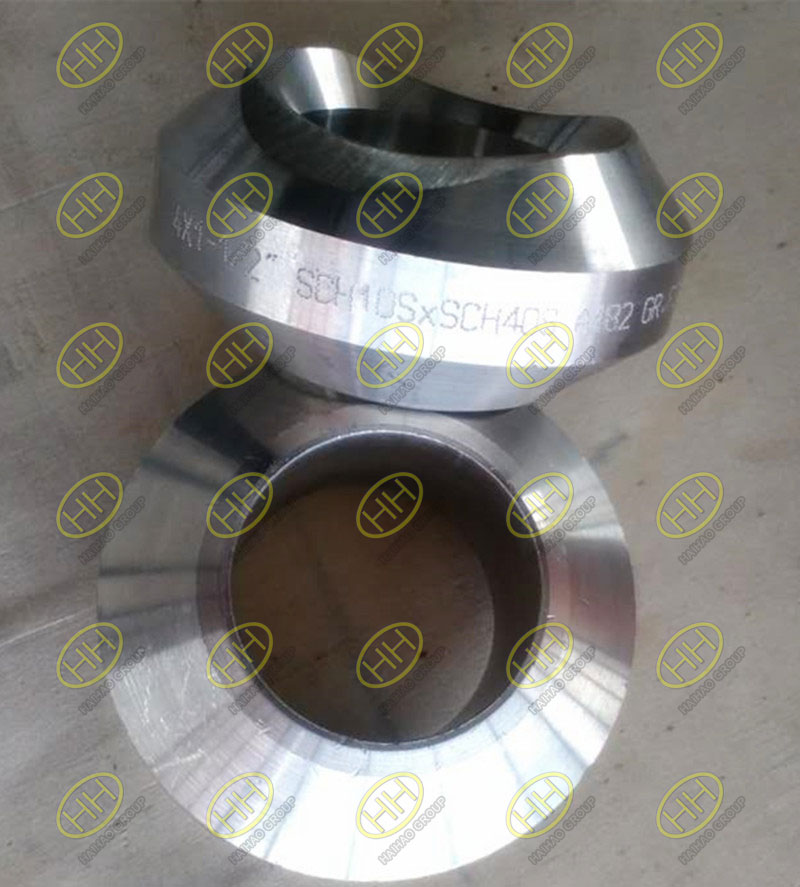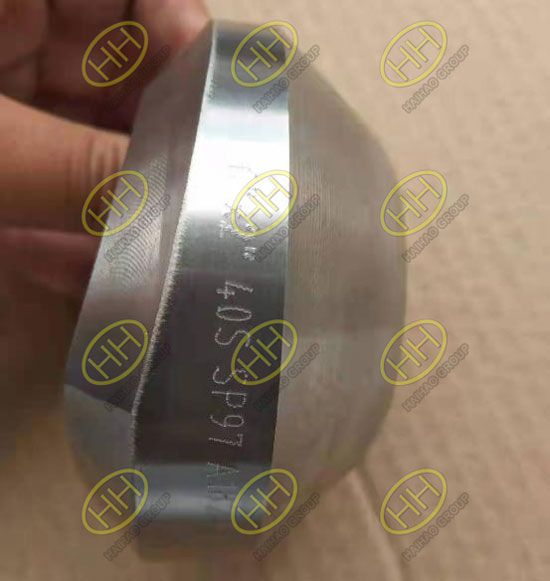Enhancing pipeline reliability: The art of weldolet welding at Haihao Group
Not long ago, an order from a Singaporean customer included a butt-welded branch pipe stand. As an expert in the field of pipeline systems, Haihao Group not only provides reliable products, but is also proficient in various pipeline knowledge. The branch pipe connection has the advantages of safety, reliability, cost reduction, and construction It has outstanding advantages such as simplicity, improved media flow path, series standardization, and convenient design and selection. However, the special structure and weld form of the branch pipe platform increase the difficulty of detection and the complexity of the process. Welding defects during the welding construction process are difficult to scientifically detect and effectively repair. In recent years, problems such as cracking and leakage of welds on branch pipe stations have also appeared frequently, and the welding quality of branch pipe stations has also become the focus of welding quality inspection. This article will take this opportunity to share with you the common welding quality problems of branch pipe stations:
Misalignment in Weldolet Hole Placement:
Misalignment issues often arise when the main pipe end is flat, but on-site discrepancies lead to a beveled main pipe. This results in a double-beveled form during Weldolet welding, leading to root incompleteness.
Residual Debris in Main Pipe:
Residual iron slag and internal burrs left uncleared after Weldolet hole creation significantly impact pipe cleanliness. Even with water flushing and pipeline blowing, complete removal of residual iron slag and cutting burrs is challenging. We recommend performing Weldolet hole creation during the pipeline prefabrication process or factory construction, ensuring internal cleanliness.
Inconsistent Hole Diameter with Weldolet:
Discrepancies in hole diameter can result in defects like incomplete fusion and lack of penetration at the root. Standards specify, “the misalignment amount ‘m’ during main pipe hole creation and Weldolet assembly should be 0.5 times the nominal thickness of the Weldolet or the smaller of 3.2mm.”
Oxidation of Stainless Steel Weldolet Root:
During welding of stainless steel, nickel-based, and high-alloy steel Weldolets, argon gas protection is crucial to prevent oxidation at the back of the weld, ensuring weld integrity.
Incomplete Penetration and Fusion at Weldolet Root:
Improper gap or excessive gap during Weldolet and main pipe assembly can lead to defects such as incomplete penetration and fusion at the root.
Inadequate Weld Foot Height or Unsmooth Transition:
Weldolet weld seams may exhibit insufficient foot height or lack smooth transition.
Insufficient Preheating and Heat Treatment:
For Weldolets with preheating and heat treatment requirements, inadequate preheating temperature and delayed heat treatment can affect the welding quality.
Quality Inspection Challenges for DN20 and Below Weldolets:
Weldolets with DN20 and below pose challenges in visually inspecting internal quality post-welding. To address this, we recommend using endoscopes for inspection and monitoring.
At Haihao Group, we are committed to addressing these challenges, ensuring that Weldolet welding processes adhere to the highest quality standards. Our focus on innovation and quality underscores our dedication to providing advanced pipeline solutions and fostering strong partnerships with our clients. For inquiries or further information, please feel free to contact our team.


